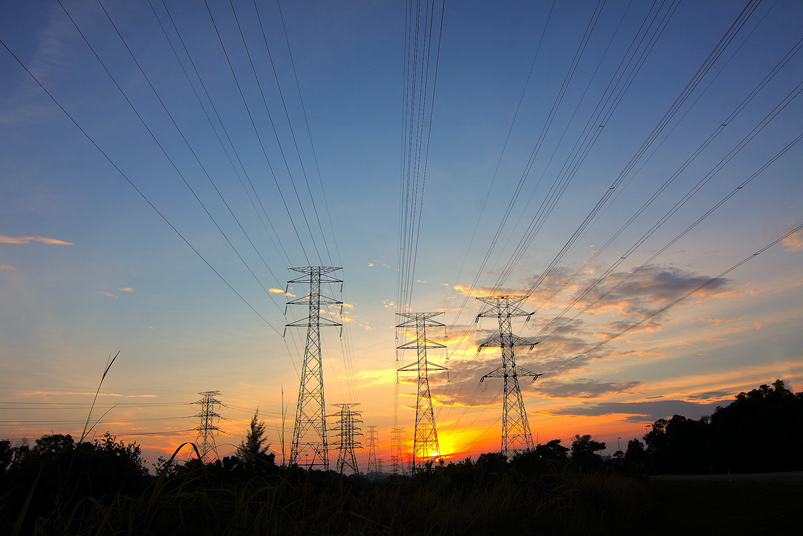Nachrichten
China Electric Power Series: Exploring the World of Electricity in English
Autor: ZYG Leistungsmodul Time: 2023-8-1
Introduction:
Welcome to the Electric Power Series, where we delve into the fascinating world of electricity. In this series, we will explore the various aspects of electricity, including its history, generation, transmission, and utilization. Join us on this electrifying journey as we unravel the mysteries and possibilities that electricity holds.
Chapter 1: The Origins of Electricity
Electricity has been around for centuries, although its discovery and understanding have evolved over time. The initial observations of static electricity can be traced back to the ancient Greeks, who discovered that amber, when rubbed, attracted small objects. However, it was not until the late 18th century that significant progress was made in understanding and harnessing electricity.
Chapter 2: Generation of Electricity
The generation of electricity involves the conversion of energy from various sources into electrical energy. The most common method of electricity generation is through the use of generators powered by fossil fuels such as coal, oil, and natural gas. However, with the growing concern for the environment, renewable energy sources like solar, wind, hydro, and geothermal power are gaining prominence.
Chapter 3: Transmission and Distribution of Electricity
Once electricity is generated, it needs to be transmitted and distributed to end-users efficiently. This process involves a complex network of power lines, transformers, and substations. High-voltage transmission lines are used to transport electricity over long distances, while lower-voltage distribution lines carry the electricity to homes, businesses, and industries.
Chapter 4: Applications of Electricity
Electricity is a versatile form of energy that powers our modern world. It finds applications in various sectors, including residential, commercial, and industrial. In the residential sector, electricity is used for lighting, heating, cooling, cooking, and powering electronic devices. Commercial establishments rely on electricity for lighting, air conditioning, computers, and various equipment. In industries, electricity is vital for operating machinery and powering production processes.

Chapter 5: Challenges and Future of Electricity
While electricity has revolutionized our lives, it also presents certain challenges. One of the major concerns is the environmental impact of conventional methods of electricity generation. The burning of fossil fuels contributes to air pollution and climate change. Additionally, the aging power grid infrastructure poses reliability issues. However, advancements in renewable energy technologies and smart grid systems offer hope for a sustainable and efficient future.
Conclusion:
Electricity is an integral part of our daily lives, powering everything from our homes to our industries. Understanding the various aspects of electricity enables us to appreciate its significance and work towards a greener and more sustainable future. In the Electric Power Series, we will continue to explore the world of electricity, unravel its mysteries, and discover the endless possibilities it holds. Stay tuned for more electrifying content!
Vorherige: China Medical Power Series: Harnessing the Strength of Healthcare
Nächste: Efficient AC to DC Converter for LED Lighting with 12V Output
relevante Information
-
2023-4-12
Generating Power with an AC-DC Converter
Generating power with an AC-DC converter is an essential process in modern-day electronics. The AC-DC converter, also known as a rectifier, is a device that converts alternating current (AC) to direct current (DC). It is commonly used in power supplies and electronic devices that require DC power to operate. In this article, we will discuss the working principle of an AC-DC converter and its various applications. Working Principle of AC-DC Converter: The AC-DC converter works on the principle of rectification. The rectification process involves changing the direction of the current flow from AC to DC. This is achieved by using a diode, which is an electronic component that allows current to flow in one direction only. The diode is connected...
Einzelheiten anzeigen -
2023-12-8
Module Power Supply: Ensuring Efficient and Reliable Power for Your Devices
In today's fast-paced and technology-driven world, the demand for efficient and reliable power supply has never been greater. From smartphones and laptops to household appliances and industrial equipment, all modern devices require a stable and uninterrupted power source to function optimally. This is where module power supply comes into play. In this article, we will explore the importance of module power supply in ensuring efficient and reliable power for your devices. What is Module Power Supply? A module power supply, also known as a power module or a power converter, is an electronic device that converts electrical energy from one form to another and delivers it to various components of a device. It takes the input voltage from a power...
Einzelheiten anzeigen -
2023-5-14
Converting 110V AC to 12 Volt DC: A Step-by-Step Guide
Converting 110V AC to 12 Volt DC: A Step-by-Step Guide Converting 110V AC to 12 Volt DC is a process that is commonly used in various electronic devices such as radios, televisions, and computers. The process is simple and straightforward, but it requires the use of certain tools and equipment. In this guide, we will take you through the process of converting 110V AC to 12 Volt DC. Step 1: Gather the Required Tools and Equipment To begin with, you will need certain tools and equipment to convert 110V AC to 12 Volt DC. The following are the tools and equipment that you will require: - A transformer - A rectifier - A capacitor - A voltage regulator - A...
Einzelheiten anzeigen -
2023-4-16
Generating AC-DC Power Conversion for Efficient Energy Transfer
The conversion of electrical power between AC and DC forms is an essential part of modern power systems. AC power is the most commonly used form of electrical power, but many electronic devices require DC power. Thus, AC-DC power conversion is necessary to supply power to all kinds of devices. In order to generate DC power from AC, a rectifier is required. A rectifier is an electrical device that converts alternating current (AC), which periodically reverses direction, to direct current (DC), which flows in only one direction. There are two main types of rectifiers: half-wave and full-wave rectifiers. Half-wave rectifiers are simpler and cheaper, but they are less efficient than full-wave rectifiers. The most common type of full-wave rectifier is...
Einzelheiten anzeigen -
2023-7-19
Is the Bidirectional Converter effectively bridging the gap between languages?
Introduction Language is a remarkable tool that enables communication and understanding among individuals. However, language barriers often hinder effective communication, both in personal and professional settings. The bidirectional converter aims to overcome these obstacles by providing a seamless transition between languages. This article explores the significance of bidirectional converters and their potential to bridge the gap between languages. Understanding Bidirectional Conversion Bidirectional conversion refers to the process of translating text or speech between two languages, while maintaining the integrity and context of the original message. Unlike traditional translation methods that focus on one-way conversion, bidirectional converters allow for a dynamic exchange of languages. These sophisticated systems employ cutting-edge technologies, such as natural language processing and machine learning algorithms, to ensure...
Einzelheiten anzeigen -
2023-7-13
Industrial AC-DC Converter: Efficient and Reliable Power Conversion Solutions
Introduction In today's industrial world, power conversion plays a vital role in enabling various electronic devices and systems to function efficiently. One of the key components in the power conversion process is the AC-DC converter. This article aims to explore the importance of industrial AC-DC converters, their efficiency, and reliability in providing power conversion solutions for industrial applications. Importance of AC-DC Converters AC-DC converters are essential in industrial settings as they bridge the gap between the alternating current (AC) supplied by the power grid and the direct current (DC) required by electronic devices. By converting AC power to DC power, these converters ensure a steady and reliable power supply, enabling the smooth operation of industrial equipment. Efficiency in Power Conversion...
Einzelheiten anzeigen


















